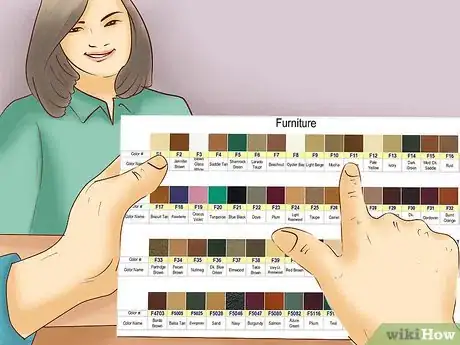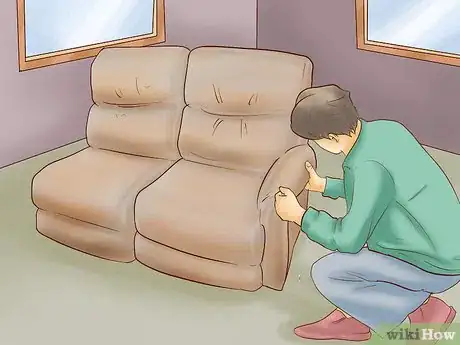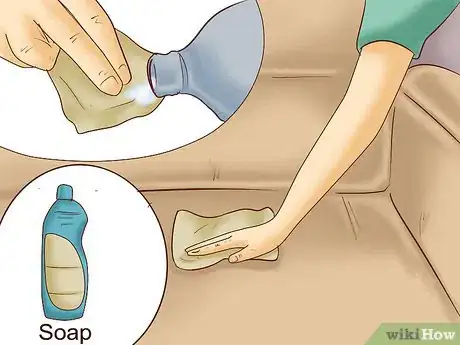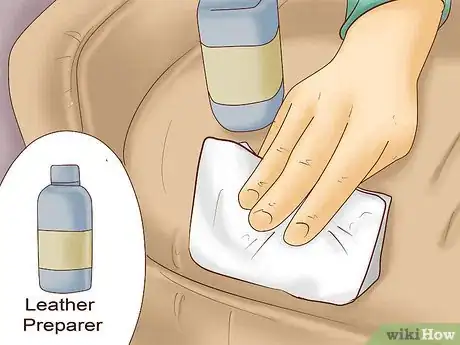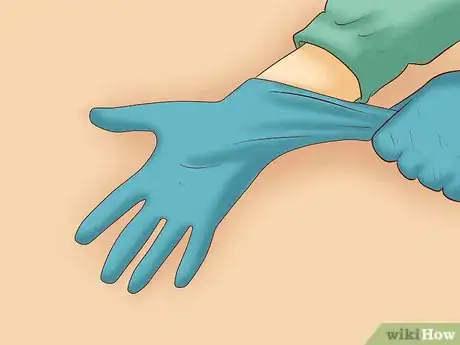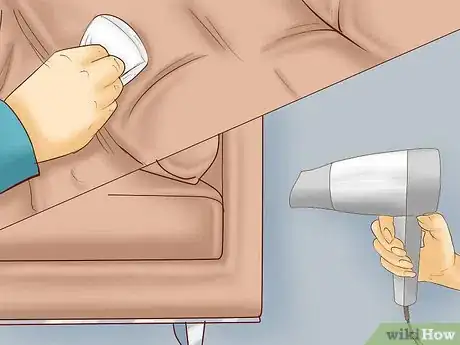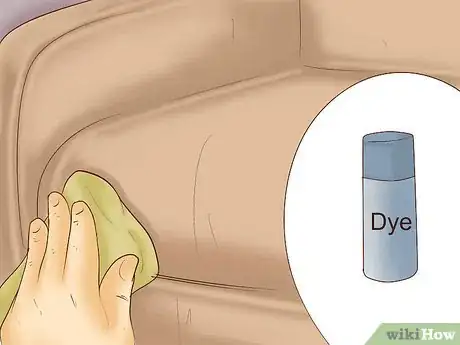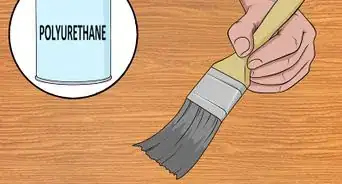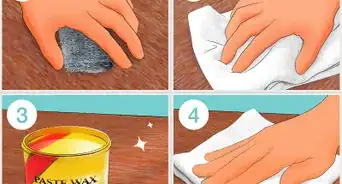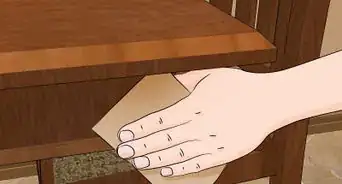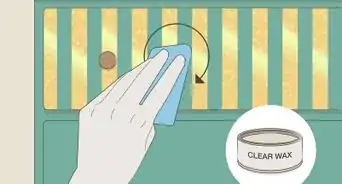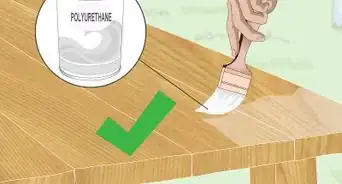This article was co-authored by Mallika Sharma. Mallika Sharma is a Certified Leather Care Technician and the Founder of The Leather Laundry, a niche spa service for luxury leather gear in India. Mallika specializes in leather cleaning, coloring, repairing, and restoring for shoes, handbags, jackets, wallets, belts, and sofas. She holds a Master’s degree in Finance and Investment from the University of Edinburgh Business School. Mallika is a certified Professional Leather Care Technician and trained with the globally reputed leather care company, LTT in the United Kingdom.
wikiHow marks an article as reader-approved once it receives enough positive feedback. In this case, 100% of readers who voted found the article helpful, earning it our reader-approved status.
This article has been viewed 109,089 times.
Leather furniture is more than just a piece in your home; it is an investment. Well made leather furniture can last a lifetime.[1] It's longevity often exceeds the stability of its color! Fading and color loss happen over time from use, from the sun and even from the oils off of people. Maybe your leather furniture has had years of enjoyment and is now showing its age or perhaps you recently purchased leather furniture at a thrift shop or garage sale and it has some knicks or fading? Whatever the case, follow these easy steps and you will soon be able to dye your own leather furniture!
Steps
-
1Decide on the desired color for your leather furniture.[2] Whether you want to re-dye it the original color, or perhaps change the color to a different hue, the choice is yours. There are many great sources for leather furniture dye, just be sure to use a professional and reputable source, and not an "As Seen on TV" type of product.
-
2Choose professional grade, high quality dye. Avoid paint, which many stores may offer. You can choose your color off of swatches or color charts available from true professional vendors and suppliers, check with leather repair and restoration professionals or leather furniture companies to find high quality dye.
- Make sure the dye you chose is leather specific, as this will give you the most natural and realistic results.
Advertisement -
3Take leather furniture to a garage, basement or work space. You'll need good light, good ventilation and enough space to move freely around the furniture.
-
4Put down drop cloths, plastic sheets or painter's tarps. This is to protect any flooring, walls, or nearby objects that you do not want dye to get on.
- If there are any areas that you do not want dyed on the leather furniture, such as a reclining handle, push buttons or decorative tacks, etc, be sure to cover them using masking tape and/or paper towels to prevent over-spray.
-
5Clean the couch. Use a very diluted dish soap and water mixture thoroughly to remove dirt, grease and grime from the leather's pores. Use about 5 drops dish soap in a bottle of water, shake, pour onto a rag or paper towels and scrub the leather gently.
-
6Prepare the leather for the dye. Use leather prep that you can get from a leather furniture dye distributor. Mist a sponge or paper towels and wipe down the leather, massaging the prep on to the surface but not spraying directly on the leather because you do not want to saturate it. Prep removes the protective silicon top coat of the leather, and using too much can damage the leather.
- You may use other products such as acetone but these are extremely erosive and too much can actually cause a chemical burn and severely weaken the leather!
-
7Put on gloves and begin the dying process.
-
8Shake the dye thoroughly, then rub onto the leather furniture with a new sponge. You may also apply dye with an airbrush tool, many people find this application to have a more even and smooth finish.[3] When applying dye, be sure not to put it on too thick, thicker areas may result in a drip or thickness that will not cure totally and could later peel away if it does not bond to the leather's surface.
-
9Apply dye in a thin, even coats over the entire leather furniture. Then dry (cure) the dye with a household hair dryer. Be sure all areas are cured thoroughly before applying any more layers of dye, if you are unsure if the dye is cured, you can wait an hour or two before applying the next coat.
-
10Sponge or airbrush the entire leather surface with dye. Continue until you are satisfied with the resulting color, its brightness and its evenness. Usually 2 to 4 thin layered applications is all that is needed for satisfactory results.
-
11Apply leather furniture top coat after the dye is done and thoroughly cured. This is to protect the leather as well as the dye. Be sure the top coat is totally dry and cures for at least 3 days before using the leather furniture!
Community Q&A
-
QuestionMy sofa is black leather, can I dye it as well?
 RubnrestoreCommunity AnswerYes, but it is generally more difficult (and requires more dye) to go from black (or dark, bold colors) to a lighter color. Future wear of the dye will also be more noticeable, so it's best to change to a color that complements the original and looks more natural as it wears, for example, black to brown or blue, rather than black to white or yellow.
RubnrestoreCommunity AnswerYes, but it is generally more difficult (and requires more dye) to go from black (or dark, bold colors) to a lighter color. Future wear of the dye will also be more noticeable, so it's best to change to a color that complements the original and looks more natural as it wears, for example, black to brown or blue, rather than black to white or yellow. -
QuestionWhere do I purchase the dye?
 RubnrestoreCommunity AnswerThere are many products available online. Refine your search by asking yourself these questions: Are you applying it to a vinyl/synthetic or a genuine leather, and if leather, what kind? Can you work with a generic stock color that probably won't match the original, or do you want a manufacturer to formulate an exact match for you? Do you want to sponge or spray the dye? Do you prefer water-based or solvent-based? It's best to work with a company that you can easily contact via phone or email.
RubnrestoreCommunity AnswerThere are many products available online. Refine your search by asking yourself these questions: Are you applying it to a vinyl/synthetic or a genuine leather, and if leather, what kind? Can you work with a generic stock color that probably won't match the original, or do you want a manufacturer to formulate an exact match for you? Do you want to sponge or spray the dye? Do you prefer water-based or solvent-based? It's best to work with a company that you can easily contact via phone or email.
Warnings
- If you have asthma, be sure to wear a protective face mask as the cleaner, prep and dye may cause irritation.⧼thumbs_response⧽

